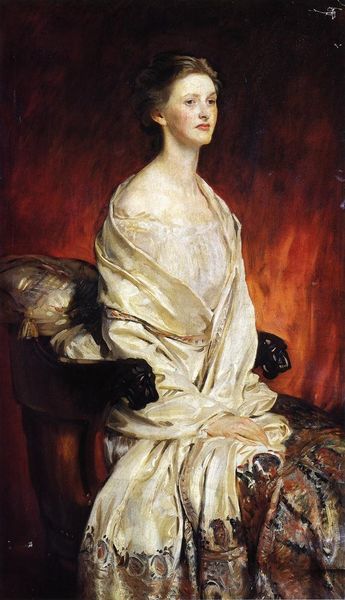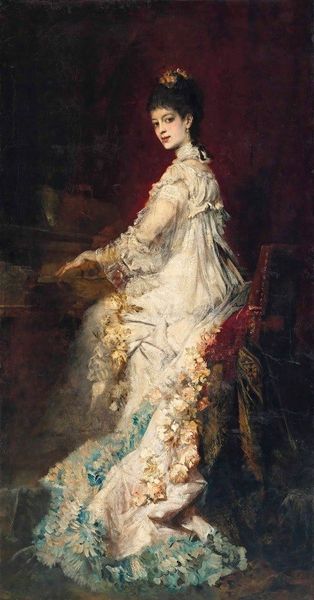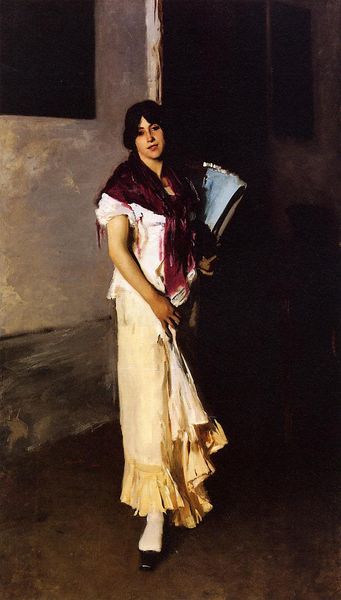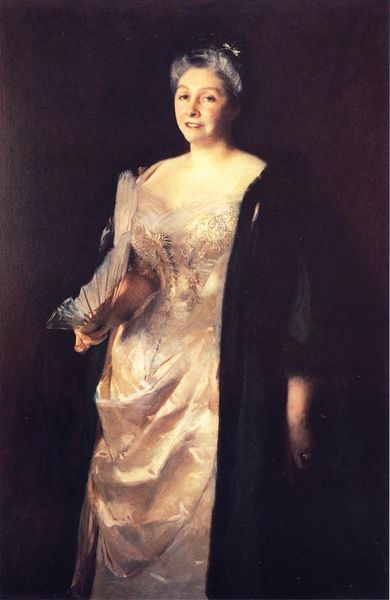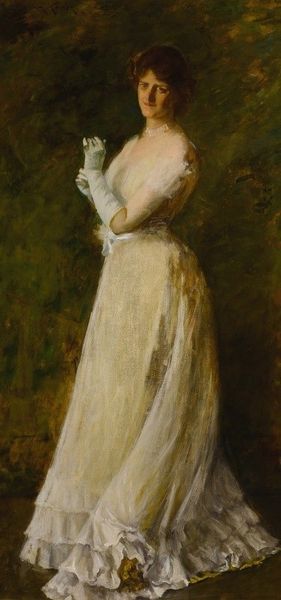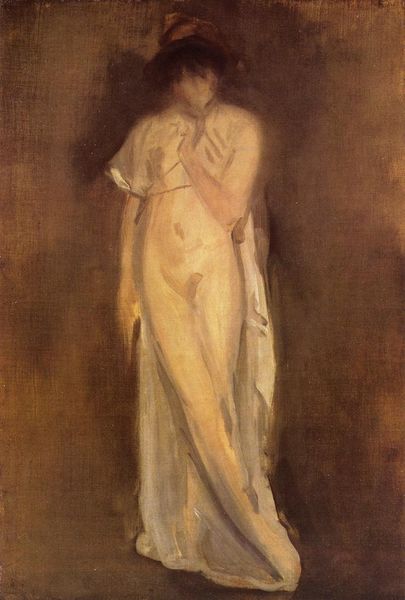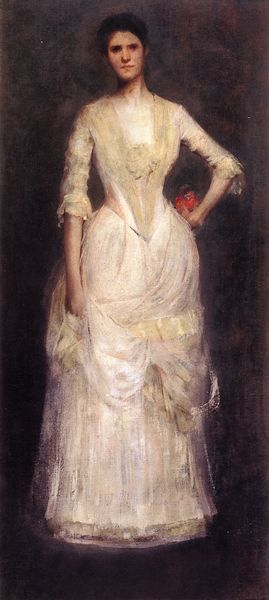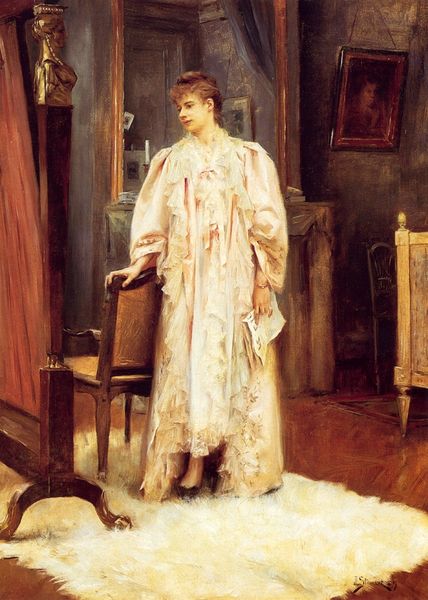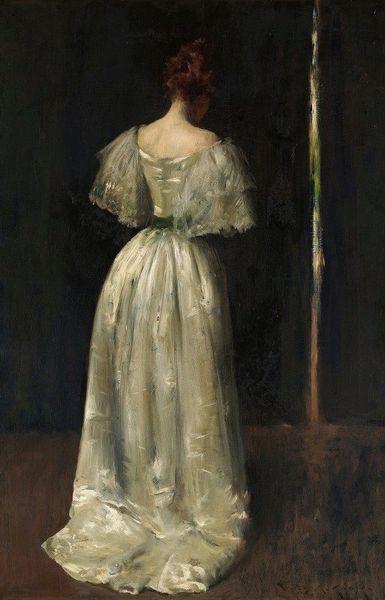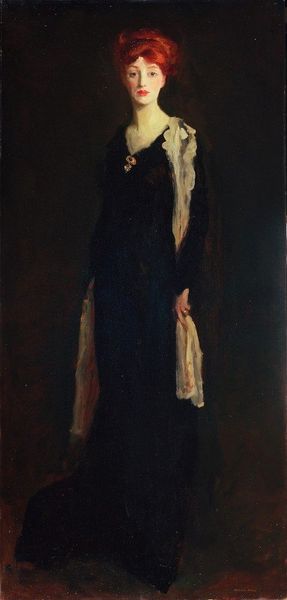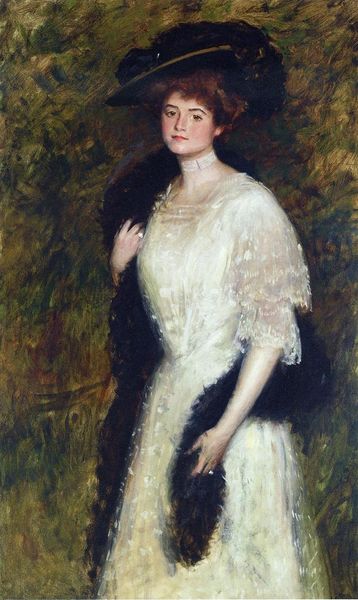
Copyright: Public Domain: Artvee
Editor: Here we have John Singer Sargent’s oil on canvas, "Judith Gautier," from around 1885. She seems very composed, even serene, in this almost shimmering gown. What are your thoughts on this portrait? Curator: What strikes me is the intersection of Sargent’s technique with Judith Gautier's own identity as a prominent woman of letters immersed in orientalism. How does Sargent, an American expatriate, portray Gautier, a French woman known for her writing about Asia, especially at a time when colonial power dynamics shaped artistic representation? Editor: That's a really interesting point. I hadn't considered the colonial undertones. Curator: Consider her pose, almost like a subject on display, framed by the implied exotic setting, and consider Sargent's brushwork, seemingly loose, even casual. Could it inadvertently perpetuate a romanticized view of the "Orient" while potentially overshadowing Gautier's individual achievements and contributions to literature? Editor: So you’re saying it might be more than just a portrait? It could be making a statement about the West's perception of the East? Curator: Precisely! This work sits at a crossroads, highlighting orientalism as a cultural construct rather than an objective truth. Judith Gautier wasn't merely an object of artistic interest but an author navigating complex cultural terrains herself. What do you think? Can the gaze ever be truly innocent in a portrait like this? Editor: I guess it's more complicated than I initially thought. It brings up questions about power and representation. Thanks for pointing that out. I’ll definitely look at other portraits through this lens going forward. Curator: Indeed! And understanding such nuance enhances our comprehension and respect for both art history and the lived experience it captures.
Comments
No comments
Be the first to comment and join the conversation on the ultimate creative platform.
